Understanding and Completing Form C Accurately A Comprehensive Guide
Introduction
Form C is a critical document for many businesses and individuals, often used for reporting income, claiming deductions, or fulfilling other tax-related obligations. The accuracy and completeness of this form are crucial, as errors can lead to delays, penalties, or incorrect tax assessments. This article provides a detailed guide to understanding and accurately completing Form C, aiming to streamline the process for filers and ensure compliance with tax regulations.
Understanding Form C
Purpose and Importance
Form C is typically used for declaring income, expenses, and other financial information for tax purposes. It’s a mandatory document in many jurisdictions for certain types of taxpayers, such as corporations or self-employed individuals.
Components of Form C:
Generally, Form C comprises various sections that request detailed financial information. This may include income details, expense breakdowns, tax deductions, credits, and other relevant financial data.
Preparing to Complete Form C
Gathering Necessary Documents:
Before filling out Form C, it’s essential to gather all relevant financial documents. These may include bank statements, invoices, receipts, payroll records, and previous tax returns.
Understanding Applicable Tax Laws:
Familiarity with current tax laws and regulations is crucial. This knowledge helps in accurately reporting income and claiming legitimate deductions and credits.
Step-by-Step Guide to Completing Form C
Filling Personal and Business Information:
Start by providing accurate personal or business information. This includes names, addresses, tax identification numbers, and other basic details.
Reporting Income:
Accurately report all sources of income as required by the form. This could encompass revenue from sales, services, interest, dividends, or other income streams.
Claiming Deductions and Credits:
Carefully review which deductions and credits apply. This section can significantly impact the amount of tax owed, so it’s crucial to claim only legitimate items as per the tax code.
Detailing Expenses:
Report business expenses accurately. This includes costs related to operations, such as rent, utilities, employee salaries, and supplies. Ensure that all expenses are substantiated with proper documentation.
Calculating Tax Liability:
Use the provided guidelines to calculate the tax liability. This might involve applying specific tax rates to income or utilizing tax tables provided in the form instructions.
Reviewing for Accuracy:
Once all sections are completed, review the form thoroughly. Ensure that all information is accurate and that all necessary calculations have been performed correctly.
Common Mistakes to Avoid
Incorrect or Incomplete Information:
One of the most common mistakes is providing inaccurate or incomplete information. Double-check all entries for correctness.
Overlooking Eligible Deductions or Credits:
Failing to claim all eligible deductions and credits can result in higher tax liabilities.
Mathematical Errors:
Simple math errors can lead to incorrect tax calculations. Use a calculator and cross-check all computations.
Failing to Sign and Date:
An unsigned or undated form is often considered invalid. Ensure that Form C is signed and dated where required.
Using Technology to Aid in Completion
Tax Software:
There are many software options available that can simplify the process of completing Form C. These programs can automate calculations, provide reminders for deductions and credits, and even electronically file the form.
Electronic Records:
Maintaining financial records electronically can streamline the process of filling out Form C. Digital records are easier to organize, search, and reference.
Seeking Professional Assistance
For complex situations, or if in doubt, it’s advisable to seek help from a tax professional. They can provide guidance specific to your situation, ensuring that Form C is completed accurately and in compliance with tax laws.
Conclusion
Completing Form C accurately is a crucial aspect of financial management and tax compliance. By understanding the form’s requirements, preparing thoroughly, and carefully filling out each section, filers can avoid common pitfalls. Utilizing technology and seeking professional advice when needed can further ensure the accuracy and completeness of the form. Proper completion of Form C not only fulfills legal obligations but also provides an accurate reflection of financial standings, essential for effective business management and planning. As tax regulations continue to evolve, staying informed and meticulous in tax-related documentation remains a key component of successful financial stewardship.


